Evidence of the impacts of climate change on agriculture in three different realities.

However, we would also like you to discover more about climate threats and climate change estimates.
Agricultural production is strongly dependent on weather conditions. Changes in average temperatures and rainfall, along with extreme weather and climate conditions are already influencing agricultural and livestock productivity in many European regions (EEA, 2019).
Climate projections indicate that most of Europe will experience higher heating levels than the global average; however, there are expected to be strong territorial differences in all European regions (IPCC, 2018).
The assessment of future climate change impacts on the agricultural sector is quite complicated since they can be positive or negative according to the cases considered, the geographic regions involved, and on the basis of numerous factors such as the physical impacts (caused by temperature variations, rainfall systems and the concentration of atmospheric CO2 ), the agro-ecosystem changes (loss of pollinators and increase in the rate of parasites and diseases) and the adaptation responses of the systems.
Potential positive effects linked to temperature increases are expected especially in Northern Europe, while a reduction in the production of crops and increased risk in the livestock industry is forecast for Southern Europe. Generally, increased temperatures can cause an acceleration in phenological development, with a reduction in biomass assimilation times, consequently resulting in lower yields. In certain areas, higher temperatures will mean that new crops/varieties can be grown. The expected changes in rainfall during the most important stages of crop development could counteract the negative effects of temperature increases, or in other cases, amplify them.
In order to tackle these changes, adaptation actions have to be taken that counteract and/or exploit the changed climate conditions. There are numerous prospects and the European agricultural sector is proving to be prepared due to both the numerous European Union projects dedicated to this issue and the independent actions taken by individual farmers. A vast number of adaptation actions taken in agricultural businesses all over Europe are shown below, and they can also be consulted on thematic maps at these links:
Best practices in Europe
The study of the impacts of future climate change on the agricultural sector is complex since it implies analyses that have to take account of multiple factors and their mutual interaction.
This is why it was essential to produce case studies focused on specific agricultural crops and in specific geographic areas to obtain a quantitative and detailed assessment of the impacts of climate change in the Life ADA areas. Insofar as possible, the analyses of climate change impacts considered herein will consider the combined effects of temperature changes and rainfall trends which, as we know, influence the crop cycles and have different impacts in the different areas of Europe.
Ten case studies in particular were examined which analyse the three agro-food supply chains considered by the Life ADA project (wine production, fruit and vegetable production and Parmigiano-Reggiano cheese) in the four Italian regions in question (Emilia-Romagna, Veneto, Tuscany and Lazio). For each case study, irrigation consumption forecasts were provided along with other quantities of agro-environmental interest for certain crops linked to the three supply chains in reference to the next thirty-year period 2021-2050 compared to the 1971-2000 climate.
In general, there has been an increase in temperatures in Emilia-Romagna, Veneto, Tuscany and Lazio, and a decrease in rainfall, even though with differences at regional and local levels. These climate variations have different impacts both in accordance with the geographic areas and in relation to the type of crop, which is why the results of the investigation and more details are broken down by supply chain as set out below.
For more information on the study by
ARPAE – Emilia-Romagna, please refer to the full report:
“Report on the impact of climate change over the selected supply chains in the four participating regions”
Case study: Romagna Apennines (Emilia-Romagna), Province of Treviso, Chianti (Tuscany) and Alban Hills (Lazio).
With regard to climate change in the wine production supply chain, even though there has been a clear increase in temperature in all areas, especially in summer, and a reduction in rainfall in spring and summer, the areas situated at more southern latitudes definitely appear to be more exposed to the impacts of climate change since they already experienced hotter, dryer weather, which is set to worsen.
The increase in temperatures and droughts could therefore have negative effects on the wine production supply chain, not only on the basis of the geographic areas, but also the type of cultivar: an increase in the need for deficit irrigation (for all cultivars), possible negative repercussions on the aromatics (for white varieties) and various consequences linked to the phenological cycle such as early germination with an increase in the risk of damage in the case of spring frost, early ripening (sugars and acidity) that risks being out of sync with development of the phenological compounds and early grape harvest, which may be a problem for cellar operations due to the high temperatures.
While the greater risk for red grapes is linked to the need for more water to avoid the grapes withering, for white grapes, the climate risk also includes the loss of territorial suitability caused by the deterioration of the sensory characteristics typical of vines produced from this variety, due to the effects of heat waves.
At the same time, the variations expected could give some advantages to the supply chain: the reduction of rainfall could reduce the risk of fungal diseases and therefore the need for specific treatment, while high temperatures could have a positive impact on the quality of the red cultivars in more northern climes.
In view of the effects of climate change on the various areas, also in relation to typical varietals and wines, we can confirm that while future adaptation will mainly involve an increased water supply in the south, in areas where white wines are common with high acidity and aromas, the adaptation to implement will mainly focus on maintaining these characteristics.
Case study: Reggio Emilia and Parma.
In the Parmigiano-Reggiano cheese supply chain, spring and summer climate forecasts relating to the area indicate probable intense variations due to both increased temperatures and reduced rainfall.
The crops currently used to feed animals that supply the Parmigiano-Reggiano supply chain have a spring-summer growth cycle, i.e., seasons in which the climate forecasts expect the most intense change in the above-mentioned parameters, envisaging a deterioration in conditions that can already be observed in the data analysed and that will go towards increasing evapotranspiration and consequently, water requirements.
It therefore seems inevitable that there will have to be significant increases in the water supplied for those crops, and improvements in the efficiency of irrigation methods. More complex adaptation will be necessary to manage the supply chain and could entail research into other fodder crops that develop in autumn-winter, a period characterised by weather-climate trends that favour the development of crops without the need for extra irrigation.
We should also remember that years in which there have been higher water requirements are generally those in which there is less availability of water resources, and therefore higher competition for resources as already happened in the 2003, 2007, 2012 and 2017 irrigation seasons. In view of an increase in the frequency of these types of droughts, it is necessary to evaluate how to make permanent meadow irrigation more sustainable, firstly by abandoning traditional irrigation methods (submersion by flowing) in favour of more efficient, sustainable irrigation like sprinkling.
The conservation of this excellent food product will depend on the ability to increase water availability and increase irrigation efficiency since there is also greater competition between the industries in the years with higher water requirements.
Case study: Ravenna, Verona, Latina (kiwis); Podenzano and Grosseto (tomatoes).
Two typical crops of the Life ADA region were studied to analyse the fruit and vegetable production supply chain: kiwis and tomatoes.
Kiwi crops which still provide sufficient profitability unlike other fruit crops, are subject to certain weaknesses in relation to their specific physiological characteristics and the high water requirements. To date, these requirements have been met with territorial adaptation actions (small lakes) and growing methods (improvements in irrigation techniques); however, the high water requirements, in view of ongoing climate change, continue to represent a risk factor in the distribution of the crops.
From the analyses, we can see how the most serious effects of climate change are most intense with respect to rainfall, both in absolute and in relative terms in the more southern areas, with differences, that can even be considerable, between the various areas of the case study: the most critical areas were Brisighella and Latina, while the least alarming situation was found in the Verona area.
A further climate risk is the return of cold springs which, as occurred in recent years, can produce enormous harm. Despite the general increase in heat, these events are not likely to become less frequent due to two concomitant trends: the increase in winter temperatures that accelerate phenological development and means that the phenological phases at risk (germination and flowering) appear earlier, and the increase in spring climate variability that produces increasingly frequent cases of a return of the cold in a context of rising average temperatures.
Tomatoes are a very common crop in Italy, and is an excellent agro-industrial product. In Northern Italy in 2021, the surface area used to grow tomatoes amounted to 38,621 ha, of which 70% in Emilia-Romagna, with processing carried out in 25 facilities, which represent about 50% of the total production in Italy. The soil and climate conditions in Emilia-Romagna are excellent for tomato crops, allowing high levels of production to be achieved, and with characteristics that make them suitable for processing.
Average climate conditions continue to favour the ideal development of the crop, however there are certain climate risks that could harm the crop, such as heatwaves. Even though on the one hand, higher water requirements may be dealt with by adaptation actions aimed at making irrigation techniques more efficient and increasing the available resources, on the other hand, heat waves cause other types of problems which are more difficult to deal with; maximum temperatures which exceed 33-35°C for a number of days, along with higher radiation can produce sunburn on the fruit and reduce pigmentation, making the product less suitable for processing.
Within the scope of the fruit and vegetable production supply chain, tomatoes appear to be the crop with the lowest increase in irrigation requirements between the old climate (1971-2000) and the present climate; this is also due to the reduction of the phenological cycle due to the general temperature increase.
Irrigation projections forecast modest increases in both areas studied. In view of these considerations, the water resources do not seem to be the most critical element in tomato growing as opposed to the increase in heat waves which are more severe in southern areas. This increase in temperature affects the quality of the processed product since it can cause a change in the quality of the fruit.
The Emilia-Romagna region is highly agricultural; the plane extends for approximately 1,160,000 ha (50% of the total surface area) with an average of 800,000 ha used for agricultural purposes. The water requirements for such a vast portion of the territory are huge, and in view of the increase in the risk of drought due to climate change, water consumption and irrigation requirements for the crops grown in the region have to be studied.
Most of the agricultural surface area is used for summer grass crops, followed by autumn-winter grass crops and grazing grass like alfalfa and permanent meadows. Fruit crops and wine crops occupy between 9-10% of the total surface area, with minimal variations from one year to the next.
Distribution of the crops in the area is strongly differentiated, and the most water-intensive crops include: fruit crops in the Romagna area, tomatoes in the Piacenza area, permanent meadows for the Parmigiano-Reggiano supply chain between Modena and Reggio Emilia and corn in Bologna and Ferrara.
The water requirements of these crops mainly fall in the summer period, but for an overall estimation of the water requirements, other requirements that the various redevelopment consortia have to meet at other times of the year also have to be considered: the maintenance of wetlands, the defence against late frosts (especially in the Romagna area) and irrigation for early spring crops or crops grown in greenhouses.
According to an estimate provided by the Water Protection Plan of the Emilia-Romagna Region, overall water consumption in the regional territory stands at an average of 800 million cubic metres per year, equal to 56% of the total consumption of water in the region, with strong inter-annual variability depending on the criticality of the water resources, which can lead to strong competition in agricultural, industrial and civil uses in the driest years, as occurred in 2012.
Climate change is increasing the frequency of drought years in the winter and spring period, leading to a strongly negative value on the hydro-climatic balance sheet at the beginning of the summer when the request for water resources by the agricultural sector is at its highest: in recent years, this situation occurred in the winters of 2006/2007, 2011/2012 and 2016/2017. In some cases, the drought was not spread evenly over the territory, but differed like in 2017 when the situation was worse in Emilia and better in Romagna. In addition to the increase in drought, there is also an increase in the frequency of summer heat waves, which leads to an increase in water requirements, early flowering of the fruit plants, greater risk of late frosts with a consequent increase in water requirements to defend against late frosts.
All these elements show the need to take many adaptation actions to deal with the water crisis, like the proper management of water used for irrigation purposes, the reduction of losses in the supply, the choice of less water-hungry crops or crops that are more resistant to climate change and the availability of climate services to forecast water requirements are – and will be – fundamental elements to deal with in coming years.
From this standpoint, ARPAE Emilia-Romagna has developed a forecasting system for summer water requirements for crops called iCOLT (Irrigation of the Crops in place, classified with remote sensing). This climate service is a result of a combination of a water balance sheet model of the soil integrated with probabilistic seasonal forecasts and satellite data analyses which allow the early evaluation of summer water requirements to help in the decision-making process by agricultural water resource managers.
For more information on the study by
ARPAE – Emilia-Romagna, please refer to the full report:
“Analysis on the water needs in the agricultural sector in Emilia-Romagna”

With the contribution of LIFE, a European Union financial instrument
LIFE19 CCA/IT/001257

Prima di procedere con l’invio della richiesta Le chiediamo di prendere visione dell’ Informativa Privacy

Before proceeding with sending your request, we ask you to read the Privacy Policy